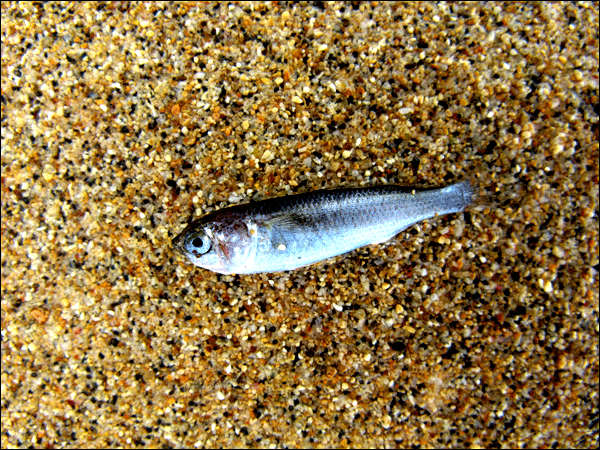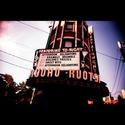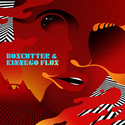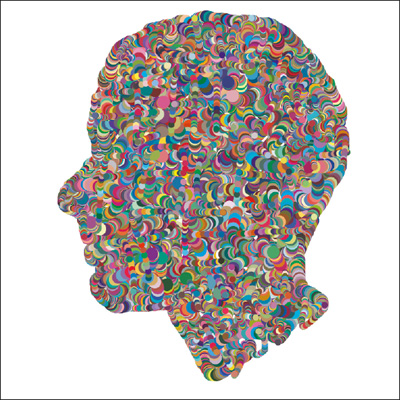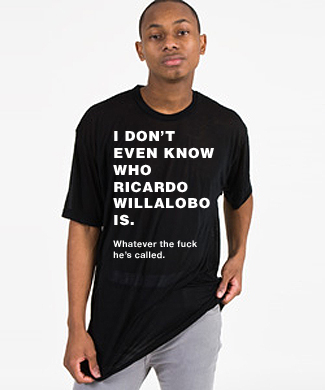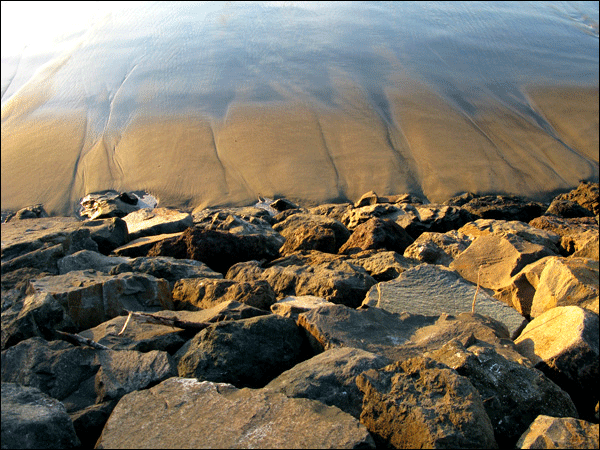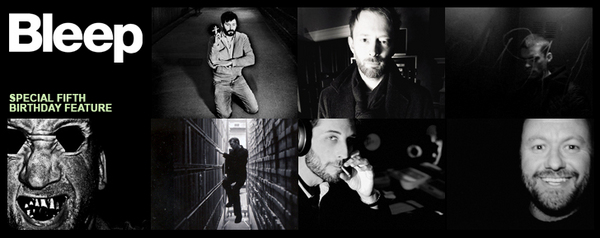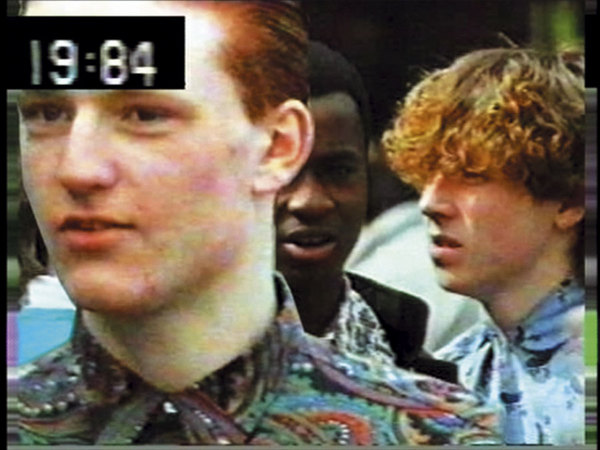
In late 2006, as a band called Klaxons floated into pop consciousness on a raft made of glowsticks and fawning press criticism, its sails emblazoned with a fluo-tinted flag emblazoned "NEW RAVE," I decided to see what Mark Leckey had to say about the phenomenon. Some seven years earlier, Leckey had produced Fiorucci Made Me Hardcore, a 14-minute video piece based upon British subcultures of the '70s, '80s, and early '90s—principally, Northern Soul devotees, football casuals, and, most importantly, ravers. (For more on the video, including YouTube and UBUWEB links to it, see yesterday's blog post.) Leckey's footage of wild-eyed dancers, mostly culled from TV documentaries, was different from any other treatment of the culture I'd ever seen, avoiding both the typical bourgeois condemnations of the mainstream media and the often inarticulate defenses from the underground. Instead, the dancers, rendered in slow motion and gone murky with poor lighting and Nth generation video transfers, seemed like something from another world. (If they hadn't mostly been white, you could have wondered if they were perhaps Drexciyans, given the way they seemed engaged in a bubbling underwater choreography.) Fiorucci bore the tenderness towards its subject of someone who had most likely "been there," but it also stood at some considerable remove—not just historical, linking rave with other rituals and subcultures that had come before it, but also narrative, as exemplified by a shadowy figure that seems to preside over the video. Leckey, I reasoned, must have interesting things to say about this rave revival. He did.
The context of the interview has dated quickly—not three years later, does anyone care about Klaxons (at least as torchbearers for "new rave," a style that they quickly disavowed as a giant practical joke played on gullible media outlets)? The rave revival never did surface, for better or for worse. (Probably, for better.) Maybe this summer, the second 20th anniversary for the "Second Summer of Love"—given that it stretched from 1988 to 1989, there are all sorts of opportunities for extended media overload—there will be more stirrings. Rave hasn't "struck back," despite the best intentions of the eponymous crew from Jena, Germay, but its memories and, more importantly, mis-rememberings resonate: just consider Zomby's Where Were U in '92?, a non-ironic reworking of classic hardcore styles as viewed through the prism of contemporary dubstep—or, for that matter, Burial's misty-eyed version of the same.
What I find interesting about the question of rave and its infinitely deferred return is less about the music or the style itself, and more about the historical circumstances that allow for unforeseen youth cultures to emerge. Could something similar happen again? My gut says no, but the older I get, the less I understand about youth culture. (For instance, I'm still feeling shaken by my discovery of Brokencyde and "Scene Kids.") In 20 years, will we have a new work, perhaps entitled Hot Topic Made Me Hardcore, to make sense of the MySpace generation?
Last month, Leckey was awarded the Turner Prize.
Mark Leckey MySpace | Wikipedia entry | The Guardian on the Turner Prize
...FOR FULL INTERVIEW, CLICK "CONTINUE READING..." BELOW
Philip Sherburne: Somewhere I read a quote from you, and I'll paraphrase, saying something along these lines: "I can’t tell if it’s just the age I am, but there’s a sense that what I knew of British pop culture or fashion has finished. It will come back in some form, but I think it's been tainted by historical circumstance." Which is really interesting, because I've been using Marx's historical formulation (tragedy vs. farce) to describe the rave revival: the first time is regarded, in polite company, as a kind of aesthetic tragedy, while the revival is a farce even on its face—it's just kitsch and gaming the media.
Mark Leckey: Oh, that's a terrible quote! [laughs]
I don't know, now I genuinely feel too old to speak about it. I feel that the difference between rave culture then and the Klaxons now is, to me, unbridgeable. It's enormous. One is a kind of half-homage parody, from what I can see of it here. Its fan base is like Hoxton, it's Shoreditch, that's about it. Compared to this nationwide insanity for two or three years in the late '80s, you know what I mean? I don’t see how the two… Basically, it seems like a kind of fashion-magazine homage to rave, it seems more like an elegy than anything else. Because it's not that. And that moment has gone, that possibility has gone, of that kind of mass youth movement
You think the very possibility of the mass youth movement has gone?
I think so, I think so. I just think all the historical… that's what I was trying to say in that quote—just the kind of apparatus or the accidents that made it happen in the first place can't produce it anymore. Like, the demographic, the political, the consumption, the proliferation, the consumerism, do you know what I mean…
There was a brand-new drug then, as well.
Exactly, all these things were like a weird chemistry that developed over 40, 50 years, and it's run its course in a way. But that seems really ungenerous of me now, as a midde-aged man, to say that. But I think that's the case.
When you did Fiorucci, what role did rave culture play in the British imagination? I imagine it must have been at its low ebb.
Yeah, everyone thought it was really cheesy. And they still do! I genuinely think hardcore is amazing, brilliant music. To me it's the equivalent to, like, garage [rock] from the '60s in America, you know what I mean? It's all these kids getting all these cheap computers and synths and making this mad garage music. But everyone still thinks hardcore is like a joke. I don't think it is, I really don't think it is.
I'm still interested in this idea of history happening twice – first as tragedy, second as farce. And obviously rave's return is being seen as farce. But you do often get the sense of rave in popular recountings, as precisely a kind of tragedy—like, "God, how did they listen to that horrible music?" It's seen as a tragedy of taste.
I'm gonna try – I've never tried, but this is my theory, right. It's probably not gonna come out right but I'll have a go at it. The difference there is there is that there was something within rave that was cheesy, but that kind of cheesiness was somehow organic or natural. Things like that happened… Basically it's like pop culture is nothing more—it's the hula hoop, isn't it, it always had that element of fad and cheese to it. The difference is now that we take it immensely seriously, so it kinda doesn't allow the cheese factor, to actually let it evolve.
You look at all the best pop moments and there is always something ridiculous about it. Now we're too conscious of the ridiculousness. We don't allow that to happen. Now It's always ironic, or it's quoted. It was a bit more, I don't want to use the word "innocent," but it was. People were maybe more willing to be a little bit more foolish.
That's one of the hindrances now. There's such a surfeit of pop culture, there's such a huge wodge of it that everyone's completely conscious of what it is and what it's made of, and that makes it incredibly difficult for youth culture, as I knew it, to just exist, just be free.
I wonder how much that has to do with contemporary modes of spectatorship. Thinking about the films in Fiorucci, you don't have a sense of those people thinking they're being watched, much less filmed. And now with MySpace, everybody is always posing first and participating second. Rave was about being on display, but not being on display to be captured and recorded and stored and shared.
Exactly, I think so. Yeah, I couldn't say more than that, I think you're right.
Would you say rave and northern soul have followed similar paths to their revival? Northern soul is so wrapped up with nostalgia, and calculated nostalgia… I'm curious to know more about why you chose to pair rave and northern soul in the film.
When I made Fiorucci, even that seems a long time ago, like the idea that mass pop culture could be beautiful, you know what I mean, could be interesting, could be beautiful.
And that was it, the similarity between the two was that they were both working class, mass popular movements. The thing with northern soul is, when I was doing Fiorucci, it was still the original northern soulers, they were the ones giving me the footage. They were still into it, they still do nights over here, they still are dancing at the age of 46 or whatever, they're still going. Northern soul in particular was always the hardest of the hardcore anyway. It was one small town in England, it was very, very underground and local. It took like 20 years before it even filtered into mainstream culture, before anyone knew what it was about. You know, They're basically like miners who started dancing, you know what I mean? It was always pretty hardcore stuff.
I don't know, that comparison with rave stops there because rave was nationwide, worldwide in some sense. So I think there was a big difference; you don't get northern soul in LA, do you. It never traveled like that, it was always a really local thing.
I didn't know northern soul had survived and persisted like that, I only knew it through Soul Jazz and the collectors, the preservationist culture.
Yeah, It's still going. When I was making Fiorucci I had this conversation at the pub back home, and I was sitting with a 45 year old bloke, and a 19 year old kid, and we were talking about northern soul, and the 19 year old kid was going to northern soul night
In Germany, techno, if not "rave culture" per se, is still going strong. You don't get the same sense of a break or a rupture, it's more like, what is now and what has always been. It's a contnuum.
In Germany it's more political, isn't it, as well. I was always part of that squat culture, so it always had an element of politics, like aspects of rave in Britain did. So rave, when it died everywhere else, continued with travelers and crusties, it carried on with them, and it's only recently died out with them, though you can still go and hear it.
It seems in Germany more they held onto it more through the political strand—just basically anti-establishment.
And of course Berlin allowed that, because of the empty space available. Or Detroit, for that matter
Exactly. That's the other thing why it can't happen in the UK now as well, that kind of access isn't there any more, the squatting laws have changed. Just on that level it couldn't happen again. Whether the will is there or not, I don't know.
Matthew Higgs called Fiorucci "an extended paean to the unadulterated bliss of nocturnal abandon." England, it seems to me, has a different approach to "nocturnal abandon" to almost any other country in the world, though I can't put my finger on it.
'Cos we don't have nocturnal abandon. Everything used to close at 11pm and that made the idea of the night even more kind of illicit, and transgressive. In New York you can stay up all night if you want. In England, even in the '90s or late '80s, pubs closed at 11 o'clock. So just to have a rave that went on deep into the night, you were already doing something slightly, socially questionable. So that produces that kind of exoticness about it. I guess that's what Higgs is referring to.
Then pair that with the discovery of Ibiza…
Exactly! I guess it's that kind of slightly English tradition of the carnivalesque, that kind of excitement of turning things on its head. The thing is, when you do things at night in England then you know that everyone else is in bed. So the world's getting revolved, you know what I mean, it's your turn, so there was that aspect of it. And when people went to Ibiza and they came back, that was the seed they spread: we don't have to keep normal hours, we can stay up all night! We don't have to do this at the times set.
I guess. I wasn't there, I never went to Ibiza. I always wish I'd done it, I wish I'd gone there.
Now it must be different, the prices are outrageous…
I had mates who went there, I don't know if I should bang on about this… The thing with rave as well, is that you did have this weird mix of classes coming together. Like all my old scallies, you know what I mean by scallies?
Uh, no.
Like football hooligans, they all went ot Ibiza and took E and got luvved up, and in England now, I can't imagine that happening now. One, because that kind of class system isn't as clear as it used to be. Britain got transformed a lot through Thatcherism, you know. Rave was something to do with that political transformation. And those things aren't in place any more, that's partly what I was saying. And that's one thing that has gone, that division of class, between like a football hooligan and an indie kid, that's more mixed up.
You have a band, DonAteller. And I see you have covered a few rave classics too?
We just did "Dominator." It's funny you know, because now we've got a MySpace site. We get all these, like new-ravers now coming on, we're like the granddaddy of rave revival or something.
We did "Dominator" by Human Rsource. It was just me and Ed [Laliq], Ed's a lot younger than me but he remembered rave, and he was a big jungle fan, he was involved in jungle. That's the strange thing for me, is that rave—with Fiorucci originally I was gonna carry on up to garage, I think I end with rave, I was gonna carry it on right up to [UK] garage, into jungle and garage, and then I could've carried on into grime, yeah?. That's what's weird is that the two aren't linking up any more. I think grime has maybe killed that tradition anyway, that kind of line of black British dance music, influenced by American dance music, that's what rave was over here, that's who were making all the British rave tunes originally. Like black British kids, well, a mix, people who had been listening to a lot of US dance music all their lives.
And why did grime kill that tradition off?
Its just got too heavy, it's gone hypermasculine. And dance music always needs some aspect of the feminine, and grime has none of that. It doesn't get people, doesn't get women dancing. I read, have you read Simon Reynolds? I think he's great, and he's right. But what's weird for me, the point for me is that there's no, with this new rave stuff it's not linking back to that tradition, which it has to if it's gonna be kind of legitimate in any way.
Ooh, Jesus, that's bad—don't say I said that. I sound horrible. I don't think music should ever be legitimate.
But it is strange to me, coming off a huge tradition of electronic experimentation, and people with machines, varying degrees of primitivism, and throw all that out the window and say we're an indie band that covers "Kicks like a mule," it's just odd. It's like you want rave without the music that made it special.
That's why I don't believe 'em. That's why I really don't believe 'em.
They're just indie kids who see a fad coming. You get this weird thing in England, because everyone knows retro accelerates so quickly, it's like you're second guessing when certain trends are gonna come back. You're kinda going, I think rave should come back about now…. And maybe it won't be this time, but in a couple of years time it will come back. And that's what it seems to me more than anything else. I really don't think… Actually I wouldn't want to say anything about that. But it doesn't seem to have that kind of grounding of that tradition of what I was talking about.
What are you working on now?
I'm making a hippie ghost film. Yeah. That's what I'm doing.
You've gone freak folk?
I dunno, I'm trying to do like an exorcism, I wanna… It's partly what I'm saying to you, I want to exorcise, get the last remnants of the 20th century out of my system. You know what I mean? Because I'm sick of it, I'm sick that I still believe in popular culture, that I can still sit here and have this conversation with you. I don't want to do this any more, I don't want to believe in that any more, and yet I do.
What will you do after you've been exorcised?
I dunno, I'll become like, I'll find nature. I'll become a true hippy. I don't know what I'll do. Anyway, that's what I'm trying to do. Is just rid myself of the last remaining zombie lumps of pop culture. So it's just these dead hippie ghosts come and haunt me and taunt me for becoming bourgeois and middle class and the rest of it.
Will it be a feature?
I think it's gonna be a performance. It think it's gonna be me wrestling with dead hippies.
With Neal from The Young Ones…
Yeah, it's gonna be like that.

